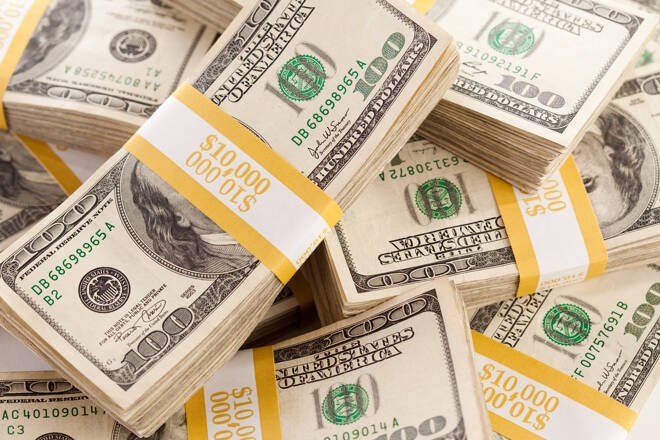Advertisement
Advertisement
US Recovery? Some Americans Spent Stimulus Money on Toys While 4 Million Skipped Mortgage Payments
By:
A successful reopening of the economy and another round of stimulus checks will be necessary to keep the economy stable.
U.S. stimulus checks were supposed to be spent on basic needs such as groceries, mortgage or rent. However, there is evidence that many Americans also spent their money on non-essentials including electronics, clothes and toys, according to major retailers. At the same time, the Mortgage Bankers Association reported that more than 4.1 million homeowners are temporarily skipping their mortgage payments.
Americans Stocked Up on Essentials Initially
During the first wave of stimulus checks, Americans used the money to stock up on essentials. In mid-April when the number of coronavirus cases was still climbing and the payments were initially distributed, “most people immediately spent on groceries,” said Stuart Sopp, CEO and founder of Current, a New York City-based mobile-banking startup.
In the next wave of payments, which occurred towards the end of April, more people used the funds “for everyday means.” That includes ordering more food delivery and takeout, and gas.
Some Americans Spent Stimulus Money on Non-Essentials
Both Walmart and Target saw increased consumer demand for discretionary goods in mid-April as the stimulus payments from the $2.2-trillion CARES Act flowed into Americans’ bank accounts, the companies’ CEOs said this week. Apple saw an uptick in demand for its products “across the board,” CEO Tim Cook said April 30.
At Walmart and Target, shoppers bought more TVs, electronics, gaming equipment and apparel. Walmart also saw increased demand for adult-sized bikes, MarketWatch reported.
“Call it relief spending, as it was heavily influenced by stimulus dollars, leading to sales increases in categories such as apparel, televisions, video games, sporting goods and toys,” Walmart CEO Doug McMillon said during the company’s earnings call Tuesday.
Target Corp. also experienced “a rapid increase in traffic and sales” for discretionary goods driven by the distribution of stimulus checks, CEO Brian Cornell said on the company’s Wednesday earnings call. “We certainly saw an uptick as we reported starting on April 15, as those checks arrived across America,” Cornell said on the company’s call.
Customers, he said, are “still seeing the benefits of the stimulus check.” People are shopping across all categories including apparel, which has been especially hard hit by the coronavirus-driven economic downturn.
Over Four Million Americans Skip Mortgage Payments as Coronavirus Hammers Finances
More than 4.1 million homeowners are temporarily skipping their mortgage payments as the coronavirus pandemic batters Americans’ finances, but the number of people needing assistance is beginning to slow.
A weekly survey from the Mortgage Bankers Association released Monday found that 8.16 percent of total loans are now in forbearance plans, up from 7.91 percent as of May 3. It was the smallest increase in forbearance since March 10, when the outbreak of the virus first paralyzed the nation’s economy.
Half of Working-Age Americans Might Not Have a Paycheck in May as Layoffs Surge
Fewer than half of working-age Americans could earn a paycheck in May as the coronavirus pandemic triggers millions of job losses.
Layoffs in April alone could push the unemployment rate to 16 percent, James Knightley chief international economist at ING, wrote in an analyst note last week. If an additional 10 million Americans file for benefits in May, that would push the unemployment rate to 22 percent – just below the peak of 25 percent in 1933 during the Great Depression.
How Will This Affect the Recovery
The past is the past and how Americans want to spend their money is nobody’s business, but the data may offer clues as to what the U.S. recovery will look like once the entire country ends its lockdown restrictions.
The current price action in the stock market suggests that investors are betting on a swift recovery. The fact that some consumers spent their stimulus checks on non-essentials suggests they were prepared for unemployment and all the other economic issues being caused by the spread of the virus.
If investors guessed right and the economy recovers quickly then it will look as if the government was right when it issued $2.2 trillion in stimulus. This may have actually stabilized the economy.
This implies that a second stimulus package, currently being debated in Congress, may be enough to solidify the economy and could put it on path for the widely anticipated swift recovery.
This sounds great on paper, however, there are still some unknowns that could delay or derail the recovery. They include a second wave of infections and the possibility of mortgage defaults.
A second wave of infections could be devastating to the economy because healthcare resources are already being taxed. Furthermore, this time, we may not see as many Americans willing to go back to practicing social distancing, which has been proven to be an effective method to control the spread of the virus.
A swift recovery will also be contingent upon whether homeowners can make up their skipped mortgage payments in a timely manner. If they continue to skip payments or even default on their mortgages then this could delay or derail the recovery.
In my opinion, a successful reopening of the economy and another round of stimulus checks will be necessary to keep the economy stable. Rising employment and more help from the Fed will be another necessity.
Falling short in any of these factors – a successful reopening, more stimulus from the government, rehiring the unemployed, Fed stimulus – could hurt the economy. This would increase the odds of a “W” recovery. Right now, investors are betting on a “V” recovery.
About the Author
James Hyerczykauthor
James Hyerczyk is a U.S. based seasoned technical analyst and educator with over 40 years of experience in market analysis and trading, specializing in chart patterns and price movement. He is the author of two books on technical analysis and has a background in both futures and stock markets.
Advertisement
